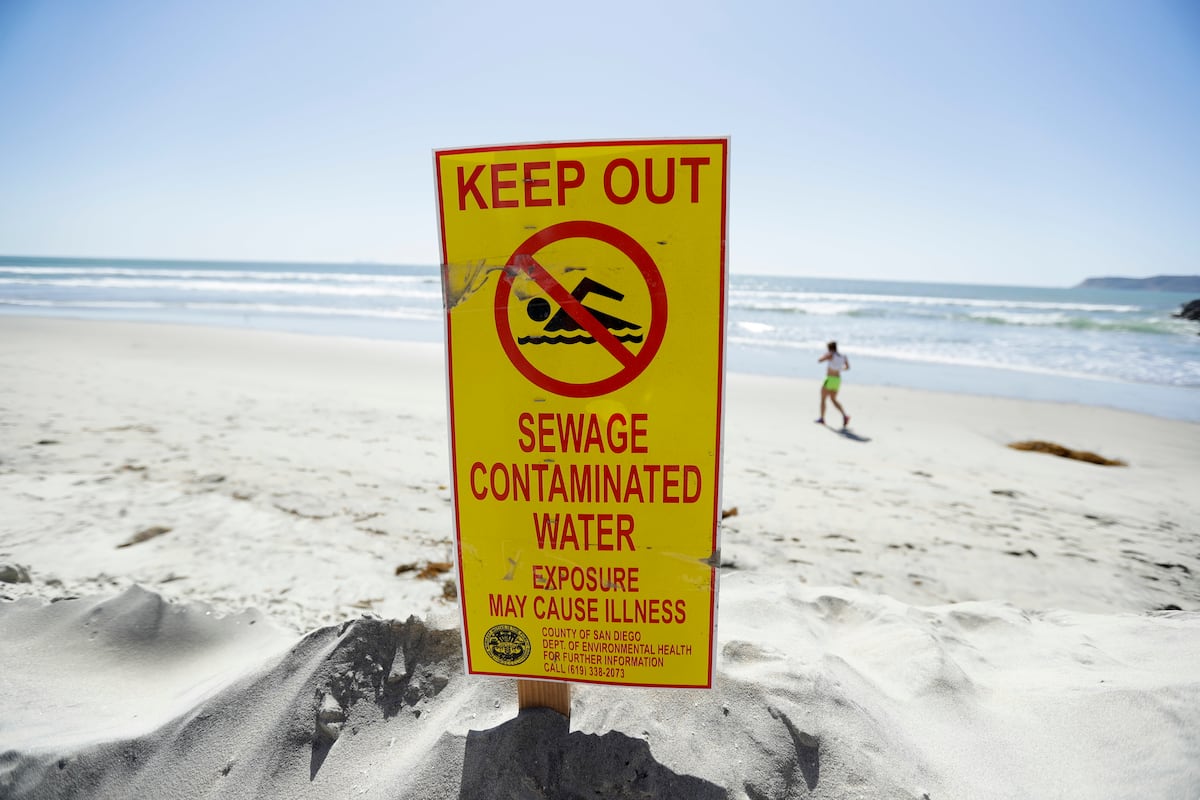For decades, the Tijuana River has been more than merely a geographical feature on the U.S.-Mexico border — it’s also persisted as an environmental hazard.
Since the 1970’s, untreated sewage flows have polluted the river, contaminating beaches from the California communities of Coronado to La Jolla and disrupting both military operations and civilian life. Generations of service members stationed along the Silver Strand in San Diego County have trained, lived and worked under the shadow of this cross-border contamination problem.
For Naval Special Warfare units, the ocean is an operational environment. SEAL candidates train daily in the surf zone, practicing timed swims, underwater navigation and small-boat handling. When bacterial counts spike, training is curtailed or moved, disrupting schedules and adding logistical strain.
Water advisories trigger Navy training evolutions to be rescheduled or moved “to mitigate any potential impact in accordance with our risk management protocols,” said Brian O’Rourke, a media officer with Navy Region Southwest.
According to the U.S. Centers for Disease Control and Prevention, prolonged exposure to contaminated water threatens health, causing gastrointestinal illness and skin infections.
Community members face similar challenges. Beach closures undercut tourism, limit recreation and force lifeguards and health officials into constant monitoring. For residents — especially those with children in swim programs or surf clubs — closures are a frustrating reminder that the crisis is both chronic and close to home.
During heavy rains, millions of gallons of untreated sewage, industrial waste and urban runoff surge northward, closing beaches along the Silver Strand and Coronado. Signs warning of contaminated surf — often in three languages — have become familiar fixtures, turning postcard-perfect stretches of sand into no-go zones for swimmers, surfers and Navy trainees, according to the San Diego County Department of Environmental Health.
And new research has posited that the crisis is bigger than just a matter of contaminated water.
That research, led by Dr. Kimberly Prather, distinguished professor and chair in Atmospheric Chemistry at UC San Diego, has shown that the problem is not confined to water. In a recent field study, Prather’s team measured hydrogen sulfide — a toxic gas from decaying sewage — at Border Field State Park and in the neighborhood of Nestor, less than a thousand yards from a notorious contamination “hotspot” at the Saturn Boulevard river crossing.
There, millions of gallons of untreated wastewater pour from underground culverts, releasing gases into the air, the researchers found. Hydrogen sulfide levels rise and fall in sync with odor complaints from residents. The most troubling spikes occur after dark, when dumping intensifies and wind stagnates — the same hours when SEAL trainees may be sleeping or conducting night exercises.
Using NOAA’s HYSPLIT model, the research tracked how wind patterns carry airborne contaminants inland and along the coast. On certain days, the winds push this invisible hazard directly toward military housing, training beaches and local schools.
Hydrogen sulfide’s “rotten-egg” smell is a warning, but its health effects go beyond odor. Chronic exposure can cause headaches, dizziness, respiratory irritation and — at higher concentrations — neurological effects, according to the CDC.
For military personnel, these impacts could quietly undermine readiness.
“We believe that any need for mitigation or relocation of training, as well as cancellations, is an impact to Navy training,” O’Rourke said.
Service members can face a one-two punch: direct contact with contaminated water during training, and then airborne pollutants afterward. Even with waterborne hazards addressed through closures and advisories, the air can remain unsafe.
“The Navy is concerned about the substantial amount of sewage and debris that routinely pollutes the south county coastline, impacts the health and well-being of those who work and recreate in the local waters, causes erosion, and damages natural resources,“ O’Rourke told Military Times. ”The Navy is in support of efforts to provide clean water and prevent impacts to Navy training.”
A renewed effort to mitigate the contamination began last month.
On July 24, U.S. Environmental Protection Agency Administrator Lee Zeldin and Mexico’s Secretary of Environment and Natural Resources Alicia Bárcena Ibarra signed a Memorandum of Understanding in Mexico City, acknowledging the severe environmental, public health and national security threats posed by untreated wastewater and stormwater flowing from Tijuana into the United States.

The agreement launches a coordinated plan to capture and treat polluted water before it enters the U.S. As part of this effort, the federal agencies committed millions of dollars to key projects, including expanding the South Bay International Wastewater Treatment Plant.
“The Trump Administration is proud to deliver this massive environmental and national security win for Americans in the San Diego area who have been living with this disgusting raw sewage flowing into their communities for far too long,” Zeldin said in a statement at the time.
Mexico has pledged $93 million in 2026–2027 to close open sewage channels and rehabilitate pump stations. Officials call these investments a decisive turning point in ending decades of cross-border contamination that has tainted both water and air.
The agreement closes with a clear pledge: “The Participants affirm their deep and urgent commitment to the permanent well-being of the San Diego and Tijuana communities, environmental protection, and regional resiliency.”
Read the full article here





